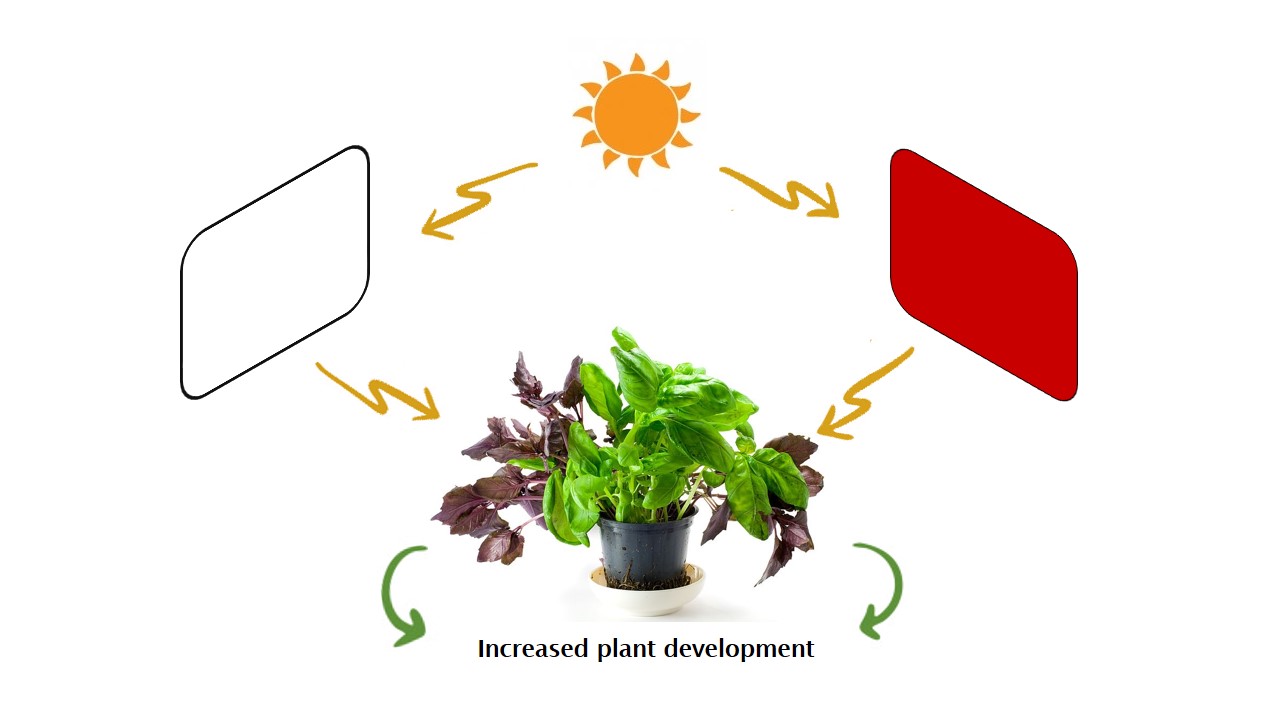
Published 2021-09-17
Keywords
- cultivation technology,
- light supplementation,
- ornamental species,
- urban cultivation
How to Cite
Abstract
Light-reflecting covers can help plant development in shaded environments, improving growing conditions in small residential spaces, encouraging the practice of small cultivations of food and ornamental species. Thus, the objective of this work was to evaluate the effect of reflective bench covers on the growth and development of different cultivars of basil, in pot and shaded environment. The treatments consisted of three reflective materials (aluminum thermal reflective mesh, shiny red and white coating on laminates), arranged on the cultivation benches, and two basil cultivars (green and purple). After 22 days under these environments, the number of leaves and nodes, stem diameter, plant height, relative chlorophyll content, fresh and dry masses of the aerial and roots parts were determined. The highest value of reflective photosynthetically active radiation was shown when using white laminate, followed by the red laminate and thermal reflective mesh. The green basil varieties showed higher values for number of leaves, stem diameter, plant height, fresh shoot weight and number of nodes, compared to the purple variety; however, in relation to the relative chlorophyll content, the purple variety was superior. The bright white and red laminate covers positively influence environmental conditions, increasing the reflectance of photosynthetically active radiation, and the development of basil plants in conditions of greater shading.






